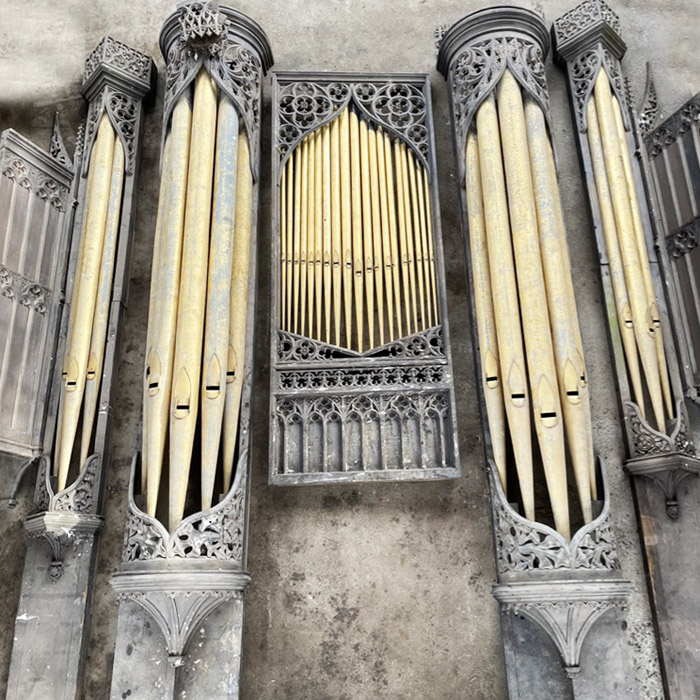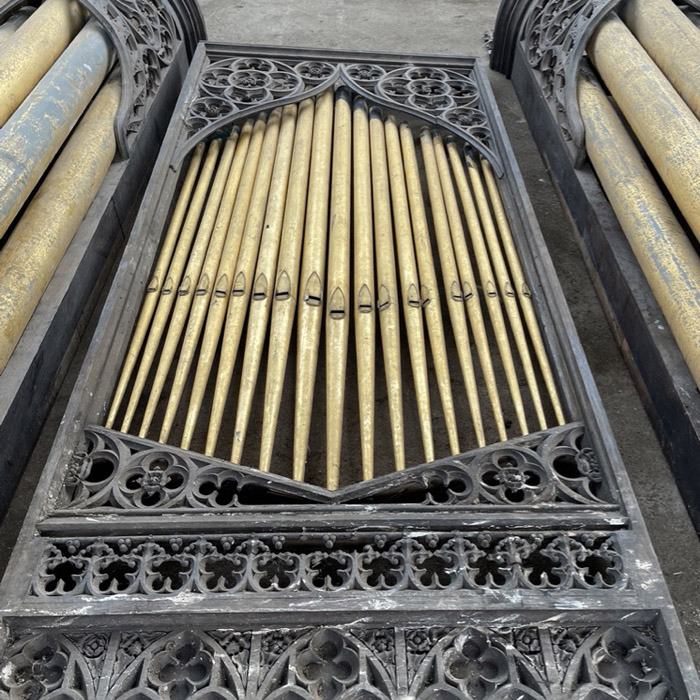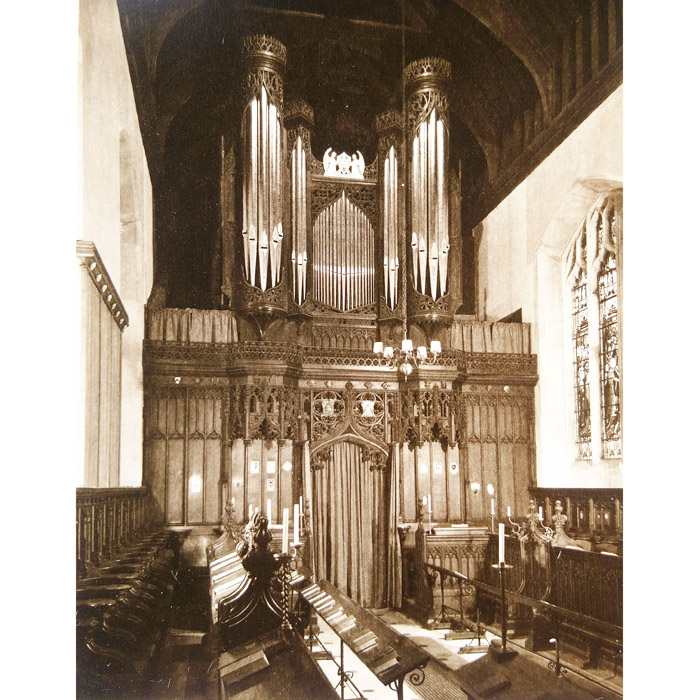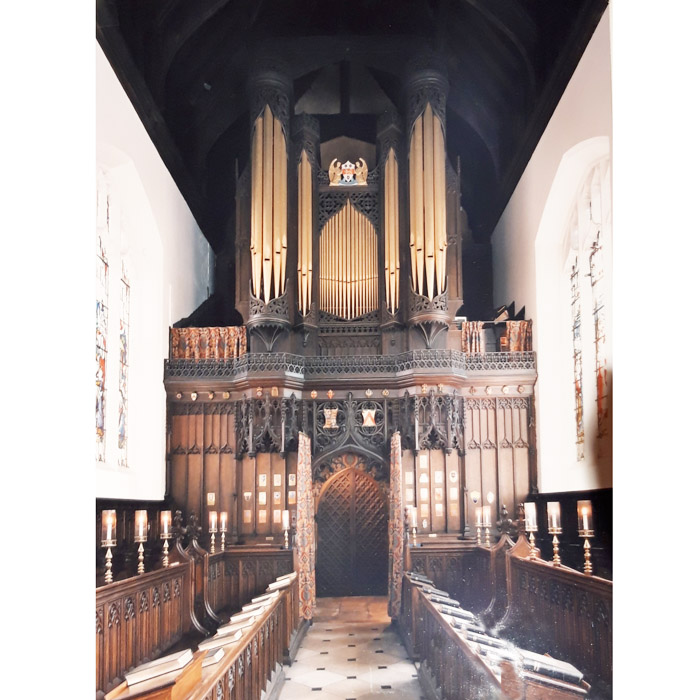No products in the basket.
A very large English carved oak organ case
by Alfred Hunter & Sons, removed from Magdalene College Cambridge - in situ there 1927-2000, RESERVED,
Archived Stock - This item is no longer available
A very large English carved oak organ case
by Alfred Hunter & Sons, removed from Magdalene College Cambridge - in situ there 1927-2000, RESERVED,
the central rack of graduated pipes with pierced oak trefoils and quatrefoils above a panel of blind arcades, all flanked by two pairs of larger bass pipes presented in a rounded housing, similarly ornamented, both pairs with ornate crestings, and a pair of accompanying return panels with blind arcades and crocheted spires,
SOLD OUT
| Dimensions: | 492cm (193¾") High, 67cm (26½") Wide, 50cm (19¾") Deep, each of the larger spires, (491cm h, 38cm w, 40cm d each of the smaller), the central panel: 300cm h x 115cm w |
| Stock code: | 49087 |
| Categories: | |
| Location: |
LASSCO acquired this spectacular organ-case from the organ restorer charged with dismantling it in 2000. He had removed it from the Chapel at Magdalene College Cambridge when the organ was replaced. For twenty years it had been racked-up in a dry barn in Dorset which it shared with a family of barn owls. It was originally made by Alfred Hunter & Sons of Clapham.
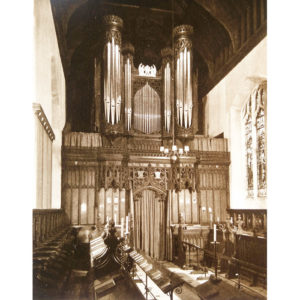
Alfred Hunter & Sons – a brief history
Alfred Hunter (1827-1911) had originally apprenticed under the revered organ builder George Maydwell Holdich (1816-1896) and then worked for Henry Bevington and J.C. Bishop.
In 1856, with his sister Ann and his wife’s brother-in-law – a fellow organ builder Henry Webb (1821-1881) – he founded his own organ building workshop, “Hunter & Webb”, at 14a Griffin Street, Lambeth.
By 1876, when they built St. Frideswide Church organ in Oxford, they were based at 379 Kennington Road. The firm’s output was prolific; they built numerous church organs including for:
Portsmouth Cathedral,
St Michael’s Paternoster Royal, London
All Souls, Langham Place, London
Hertford College, Oxford
…And at least three known examples in Australia.
Magdalene College didn’t have an installed church organ in the chapel until 1927. By then Hunters was into its third generation and was known as “Alfred Hunter & Sons”; it was run by Alfred’s son Robert Hunter (d.1932) and his grandsons Alfred and George and was based at 65a Clapham High Street*
Two years after the Magdalene College job, the firm moved to 235 Queen’s Road, Battersea. Finally, in 1937, the business was taken over by the Liverpool firm: Henry Willis & Sons.
In 1939, Henry Willis rebuilt the Magdalene organ. Later, in 1975, it was tonally and mechanically modernised by Norman Hall and finally replaced in 2000-2001 by the Goetze and Gwynn instrument that can be seen at the college today.
The organ frontage now at LASSCO comprises a central rack of pipes flanked by two pairs of bass pipe towers and a pair of return panels. These pipes were installed as an organ case screen – they are pipes that could work but were never intended to be operational. The pierced gothic oak ornament is well carved. Photographs of it in situ reveal how well it sat in the chapel – the carved elements conducive to the earlier oak panelling.
Some of the inner workings of the organ were re-used at St Mary the Virgin Church, Hadleigh
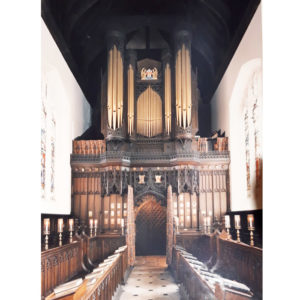
* The premises in Clapham, where this organ was made, was purpose-built in 1881 by Sidney Smith (1857-1913), the architect best remembered for designing the Tate Gallery built in 1897. The building was well-known and comprised a four-storey house with showrooms at the front and workshops at the back (re-numbered as 87 Clapham High Street c.1900). Alfred and George’s brother Harry lived there with them, together with two other siblings. Harry was goal-keeper for Southampton FC in the 1913-14 season before enlisting with the Royal Flying Corps. He died in France in 1917 delivering aircraft to the front – the Stockwell War Memorial up the road bears his name. The house was demolished c.1960.
Related blog posts

